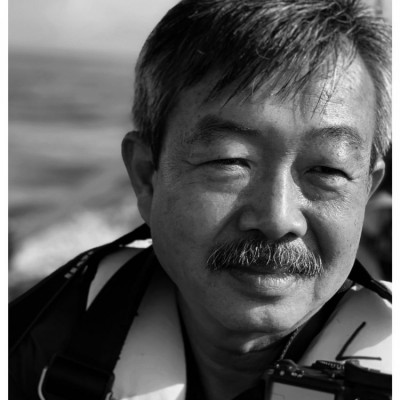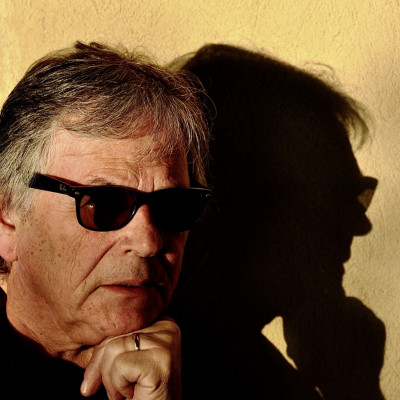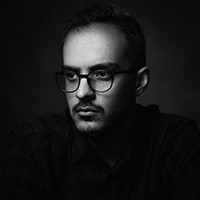SEARCH






|
|
|
|


by Yvette Depaepe
Published the 31st of May 2021
Amir Hossein Naghian is a real master in architectural photography. His passion for that genre keeps on growing continuously. His work is mainly black and white and he loves to reduce his photographs to the essential in a minimal way by combining forms and shapes seen from different perspectives in outstanding compositions. Some of his works appear fictional and dreamlike but that is what he calls his personal view and artistic freedom.
I invite you to admire Amir Hossein's splendid body of architectural photography through this interview. Many thanks for sharing your thoughts with us, my friend.
Briefly tell us about yourself, your hobbies and other jobs, Amir Hossein.
I'm 28 years old and started with photography as an amateur in 2017. Since 2019, I have been pursuing architecture photography professionally. I live in Tehran and am currently serving in the military. I am very glad that I was invited for this interview. Many thanks ....
How has your history and life experiences affected your photography?
I have been very interested in urban spaces since I started photography. This interest comes from my academic field. I studied at the University of Urban Engineering and I love black and white and dark spaces. Maybe these preferences come from my personality.
Which are your most important experiences that has influenced your art?
My most important life experience is enjoying the moments. I always tried to raise my expectations and improve the level of my work so that I could satisfy myself in terms of enjoyment. It can be said that this experience has become one of the principles in my personal and artistic life over the years.
What first attracted you to photography?
From an early age, I used to photograph flowers and water droplets with my mobile phone, as well as insects just for fun. During the following years, and especially during my student days and projects, I took up the camera and my passion for photography was growing bigger and bigger. I fell in love with it and decided to pursue it very seriously.
Describe your overall photographic vision.
I always try to reach my ideal goals. To me, to develop a personal photographic vision, we need to understand our environment. This perception and view on the surroundings is the main difference between a photographer and an ordinary person. It often is a hassle to me because I'm always looking for different visions, forms and perspectives. I always try to understand the essential in a minimal way and all extra things are erased. You can notice this in all my photos.
Why are you so drawn by Architecture Photography?
As I said before, my major interest goes to urban space and it grow a lot siche I got my camera. In the beginning, I only photographed urban landscapes with the long exposure technique to record the light of highways etc. But over time, as I delved deeper into photography, viewing excellent photos from great photographers on various sites, I was triggered by fine art architecture images. Practising a lot, I tried to reach the level of my photography role models. From then on, my focus on architectural photography was born.
What is more important to you, the mood,/story behind your images or the technical perfection?
These three criteria all are important to have a good photo. But to me, in architectural photography, achieving the right combination, attractive form and correct execution of editing techniques are an absolute priority. Of course, in some of my photos, due to the historical nature of the place, it will appear fictional and dreamlike but that is what artistic freedom is about.
What generally is your relationship to your subject matter beyond being an observer?
I always put myself in the place of the audience or the judge when looking at my subject. That makes you lesser self-confident and proud and allows you to identify the weaknesses of your photo. This is an extremely important point. An observer or output expert will see your photo and read your caption differently. They never ask about the conditions in which you took the photo but try to communicate with your work itself.
Do you carefully prepare the locations where you are intending to photograph?
Photography lovers are always very enthusiastic about taking photos getting to a location, shooting in a hurry, editing and sharing it.
But this is what I always do myself to be prepared. First of all, I look at my location on Google Map and examine it from different angles. I guess the direction of the sun defines of the the best angle. Then I check the weather. As we all know, the golden hour is the best. If I photograph at day time, I'm looking for uniform ad soft light on the buildings. Usually minutes before sunrise of after sunset. On other moments in the day, the best is when the weather is cloudy.
First thing I do is checking the weather, going on the location without a camera to see the different angles and perspectives, the general shape of the building, the light etc. I happens often that I go to a specific more than 10 times to take a picture and still return home empty-handed. But in the end, I always get the photo as I wanted it.
So , one good advice, do not rush to take a photo. A quality photo is worth the efforts.
What gear do you use (camera, lenses, bag)?
I use a Fujifilm XT20 camera and two lenses : 18-55 and 10-24. I also use the ND1000 filter to reduce the light and a Jobi brand tripod.
What software do you use to process your images?
I use Camera Raw to start and go to Photoshop for the final editing.
Can you tell us something more about your work flow?
First of all, in order to take an fine art architectural photo, you have to pay a lot of attention to the composition and form, as I said before. But a good architectural photo also needs a good editing. To start, you need to set up a strategy for yourself. I spend a lot of time editing photos. Sometimes it takes up to 2 days. Due to my great sensitivity when it comes to share photos, the editing must be clean and attractive.
The most important stage is the separation of sky and earth and dividing the different parts of the building. If this step is not well done, there will be continuously problems.
By using a luminescence mask, you can perform the most complex and difficult separations. There are also several panels that can speed up your work like Raya Pro / Artsin Pro X ....
Then the second stage is coming up, which includes highlights and shadows with the help of a luminescence mask. Which part of the photo will be light or dark depends on the composition. Usually the sky in my photos is a long exposure. Sometimes I have to add the sky to the original photo to make it more attractive.
The final steps also include cleaning the edges and sharpening.
What is your most important advice to a beginner in Architecture Photography and how do you get started?My advice to those who are new to architectural photography is: Do not rush. It takes time to learn all the techniques / There are so many good photos, try to analyse them and be inspired by them to start your work / Create creativity in your work after a while, try to have your own style to work with Let them know you / and do not forget that practice is the only way to reach your ideal and also learning is never complete, we are always experiencing and learning new things so do not despair and fight for your goal and be sure you will succeed. . I know that editing architectural photos is very difficult and tedious and time consuming. Use YouTube training clips to strengthen and learn the techniques.
Who are your favourite photographers and more importantly, how has your appreciation of their work affected how you approach your own photography?
Two photographers in this genre have always been an inspiration to me Joel Tintjelaar and Julia Anna Gaspodarou. I always used their tutorials and photos to motivate myself I hope I can reach their level one day and it will be a great honour for me
Is there any specific photo taken by another photographer that has inspired you a lot and why?
There are many good photographers from whom I got ideas to start my career But now I try to be more creative than before and have my own personal style
Are there any specific directions that you would like to take your photography in the future or any specific goals that you wish to achieve?
Well, I live in Iran. We photographers have a lot of problems here Including restrictions on photography of different places and restrictions on the use of tripods and cameras, etc. It is also very important for me as a fine art architectural photographer to have locations with attractive architecture, such as Zaha Hadid buildings. But in my country, these plans are very few and limited In my opinion, the best place for a photographer is the architect of Dubai or New York cities or cities from China and Japan. I wish to photograph one day in these cities that have tall skyscrapers and towers with amazing shapes. And I think I can best portray my talent there.
Describe your favourite photograph taken by you and why it is special to you?
This photo is always a special photo for me Because this place reminds me of the contemporary history of my country And the name of this work is Freedom Tower At present, the people of my country are not in a good social, political and economic condition, and I think this hatred is becoming more and more apparent in the throat of this historical symbol of my country. This photo also received very high feedback on social networks and photography sites, including 1X.
Is there anything else you wish to add and what do you think about 1X as a home base for your work?Finally, I want to thank you for giving me the opportunity to have an interview with the best photography site in the world. It is definitely an honour for me I strongly suggest to all beginners in the field of photography to take a closer look at the photos published on the site. Each of these photos has lessons to learn and enhances your artistic and photographic look. 1X is one of the best photo publishing sources, so if you want to be seen, present your work without fear. If your photo is rejected, do not be disappointed, try harder, you will surely succeed. Do not forget that 1X is a place for the best hosts.
Thankfully yours!
 | Write |
 | Vincent Lim Dear Amir, your work is wonderful, thank you for your sharing. I'm encouraged by your gallery, inspired and motivated too. |
 | Arnon Orbach CREW Dear Amir, thanks for sharing your insights on architecture photography, great interview with excellent selection of your highly impressive works. My compliments to you and to Yvette on making it so accessible and interesting. |
 | Yvette Depaepe CREW Thank you so much for your appreciation, dear Arnon! |
 | Amirhossein Naghian Thank you dear friend It was very interesting for me to be interviewed and express my opinion with the site magazine |
 | Yvette Depaepe CREW Splendid work, dear Amir Hossein. It was a real pleasure to me to interview you and to present you to the readers. Thanks for your fine collaboration and congratulations. Cheers, Yvette |
 | Amirhossein Naghian thank you I was honored to be interviewed by the world's largest and best photography site, and thank you so much for giving me this opportunity. I hope this interview was interesting and useful for the audience |